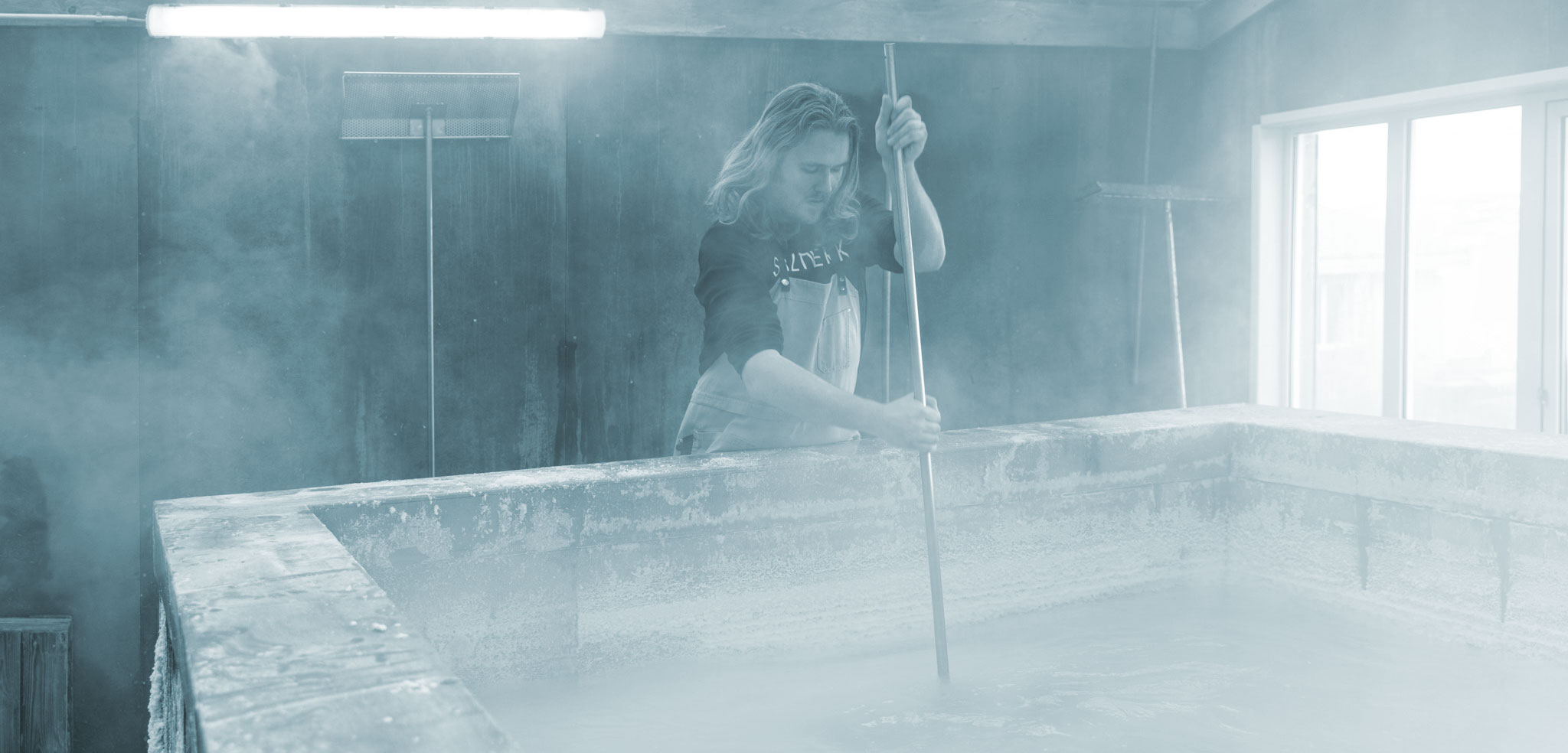Coastal Job: Artisanal Salt Maker
Gisli Grimsson uses natural energy for sustainable salt production in the wilds of Iceland.
Article body copy
Some people work in cubicles, others work in kitchens, but the most intriguing workplace of all may be the coast. Meet the people who head to the ocean instead of the office in our Coastal Jobs series.
In his role as salt maker and export manager at the company Saltverk in the Westfjords region of Iceland, Gisli Grimsson produces culinary salt by harnessing geothermal energy.
At Saltverk, we mine salt a little differently than companies elsewhere in the world—with geothermal energy. We pump water that has been naturally heated below ground through a series of pipes and radiators surrounding and immersed in our many salt pans, each one roughly the size of a king-size bed; the heat causes seawater in the pans to boil, speeding up the natural process of evaporation.
The salt is still wet after the initial evaporation stage, so the other workers and I use giant tailor-made metal rakes to shovel it into bins where it drains for half a day. Then we transfer it into our drying room—essentially a sauna that uses fresh air warmed with leftover geothermal energy heat to evaporate the remaining water overnight. The natural, sustainable energy, along with pristine seawater from the fjord, provides a clean and delicious-tasting sea salt.
Next, I do a sensory inspection—I ensure that only truly crispy, soft, crystallised salt flakes, with no calcium clumps, make it into our product line. Then, depending on the intended product, I might mix in some spices or even smoke the salt with birch wood. Every step of the process is done by hand.
Hand-harvesting is less about sustainability (though it obviously has less carbon output than machine production would) and more about taking care of fragile salt flakes. More flakes stay intact during a hand-pulled extraction than if a machine was raking and pulling salt crystals. The manual process also creates more jobs, which helps keep the economy in the Westfjords alive.
Salt production in the wilds is not for the faint of spirit—things never go as expected. Westfjords’ very remote and sparsely populated Reykjanes Peninsula, where our production facility is located, is a four-hour drive from Iceland’s capital, Reykjavík. Once in February, a bad winter storm broke the pipe that delivers seawater to our salt pans away from the pump it’s normally connected to on shore. We knew roughly where the disconnected pipe would be, but to actually locate and retrieve it, I needed to get in the water. I put on a wetsuit and goggles and jumped into the below-freezing water. I was tethered to a boat with a rope and the driver slowly pulled me along, through the semi-frozen surface of the seawater, as I scanned the ocean floor. Chunks of floating ice kept hitting me, making the process all the more difficult.
It sounds cheesy, but I love everything about the work we do. Every minute is fun, even when going through hardships. The sea has a big place in my heart. I come from a family of fishermen. I didn’t quite follow the family tradition, but at least I work with the sea in a different way!
Icelanders do not actually have a deep history of making salt, but there are a few examples from the past. In the 18th century, there was a salt-production facility located where Saltverk is today—its salt was mostly used to export salted cod (baccala). In 2011, Saltverk revived the location, using the same geothermal energy as in the past.
There is a story that the other salt makers and I enjoy. The sheriff of Ísafjörður (a nearby town in the Westfjords) sent a letter to the Danish king in the 18th century expressing concern that if salt makers married, their wives would distract them from their work. Of course, avoiding marriage isn’t the tradition—and many of our salt makers are actually couples who work together—but we think the idea is funny.

